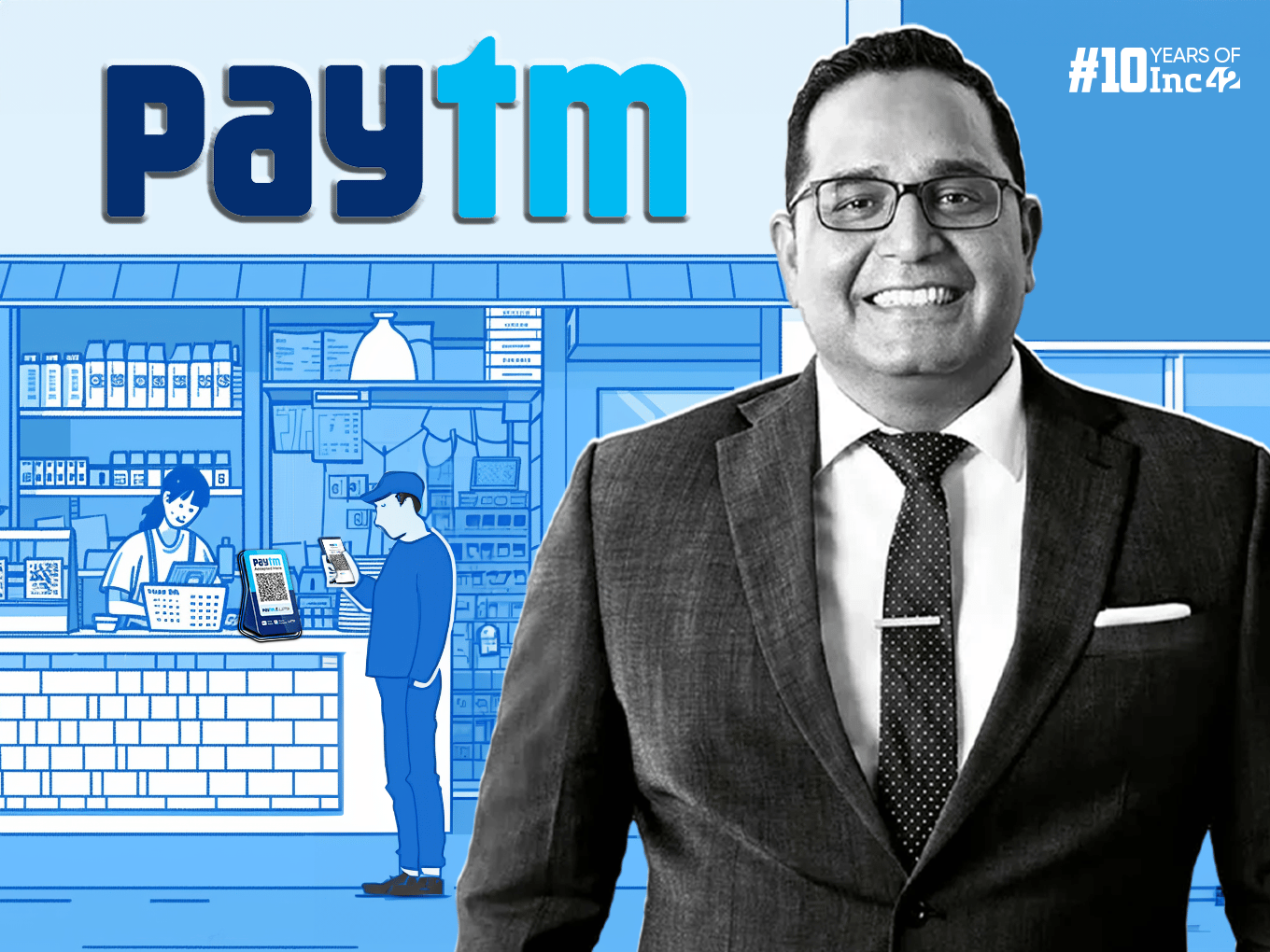Paytm’s Four-Step Plan To Revive Its Revenue Machine

Paytm may have reported profitability in Q2 FY25, but it also knows that this is not the real deal. The fact is that the net profit in the books at the end of Q2 is only thanks to the substantial one time gain from the sale of the ticketing business to Zomato – see our coverage of Paytm’s Q2 FY25 financial performance.
Nevertheless, Paytm is bullish that it is on the right track after the downturn triggered by the Reserve Bank of India (RBI) action on Paytm Payments Bank.
To its credit, the company managed to resuscitate the revenue momentum, as income grew on a sequential basis. At the moment, it’s not clear if Paytm’s performance in Q2 has improved on Q1 as there are tax implications related to the one-time gain which will only become clear in the next few months.
But founder and CEO Vijay Shekhar Sharma and CFO Madhur Deora were keen to talk about how Paytm will get back to real profitability at the Q2 FY25 earnings call.
Much of the call was dedicated to the default loan guarantee arrangement in the merchant lending business. Besides this, there was some attention given to the cross-selling strategy as well as the AI-led efficiency and productivity push, which Sharma claimed should reduce Paytm’s dependency on hiring.
Loans Biz Gets A Boost
Sharma spent a bulk of the call explaining why the DLG provision will bolster Paytm’s merchant loan business, where the company has adopted a distribution-led revenue model.
A default loan guarantee (DLG) also called a first loss default guarantee (FLDG) means Paytm will compensate its bank or NBFC lending partners for any losses due to defaults in the lending partner’s loan portfolio, up to a certain percentage of the total amount disbursed.
“When we were reviewing all of our regulated businesses, we observed that a large chunk of the industry has matured and reached towards a DLG-based structure. While our commercial loan distribution model never had any challenge from any audits and our lenders, we were looking at how we can make it aligned to what everybody else is doing,” Sharma said.
Sharma claimed that the implementation of the DLG model doesn’t change Paytm’s profitability guidance. The arrangement began with one of its lending partners for merchant loans in August 2024. Assets under management (AUM) as on September 30, 2024 stood at INR 1,651 Cr and with board approval, up to INR 225 Cr has been provisioned for this arrangement.
“DLG costs are going to be paid back to us, hence translating to higher revenue. So, in a way, the business won’t be requiring any additional equity capital or investment because of this rotation,” the CEO added.
Pushing Paytm Money & Insurance
Beyond this, Paytm is bullish about opportunities in the wealth and insurance market. CFO Deora said that the company expects its discount broking platform Paytm Money to ride tailwinds in the online brokerage space. He added that the company will focus on cross selling for Paytm Money as well as the insurance business.
“We see a large opportunity to monetise our payment customers (consumer and merchant) by cross selling financial services. In this quarter, 6.0 Lakh customers availed financial services, which has a large headroom for growth,” Paytm said.
Within the super app approach, Paytm is banking on reviving the consumer payments flywheel so that it can realise this cross-selling strategy.
Ads On Soundbox
The Paytm Soundbox is a lynchpin of the merchant payments and lending business. It acts as a revenue-generating top-of-the-funnel product and Paytm is looking to add another revenue component to it with ads.
Sharma delved into the advertising services launched on the Paytm Soundbox. The company is now running audio ads for Meesho, Coca Cola, Mondelez and Dabur on the PoS device. Soundbox sign ups surpassed January 2024 levels in Q2 with 1.12 Cr devices activated.
But Sharma claimed this business will need more time to scale up, and will not be a meaningful contributor to revenue in the short term. He referred to it as a “20% experiment” of the Paytm team.
Sharma acknowledged that there was a drop in active users in the months following the RBI directive. For now, the company is collecting inactive devices and redeploying them after refurbishing to reduce spending. The primary target for Paytm will be merchants in metros and Tier I cities
“We plan to continue reactivating merchants and redeploying inactive devices to new merchants over the next 2-3 quarters. This will lead to a higher active merchant base and higher revenue,” the company said.
Using AI To Save Costs
And finally, Sharma spoke about how Paytm is leveraging artificial intelligence to cut its expenses.
The company’s overall expenses went down by 24% to INR 2,245 Cr in Q2 from INR 2,937 Cr in the corresponding quarter last year. Besides, it also trimmed employee costs by 13% on a sequential basis.
The company said that AI has helped it improve productivity of the tech team significantly in the quarter.
Sharma exclaimed that Paytm’s support staff costs have gone down by 60% in the past ten months. “The AI models that we are deploying and the costs that we are incurring are significantly low. I am happy to tell you that we have reduced 60% of our manpower cost on support in the last 10 months,” he said, citing the example of an AI-powered voice response system developed by Paytm for customer support.
The post Paytm’s Four-Step Plan To Revive Its Revenue Machine appeared first on Inc42 Media.
No comments